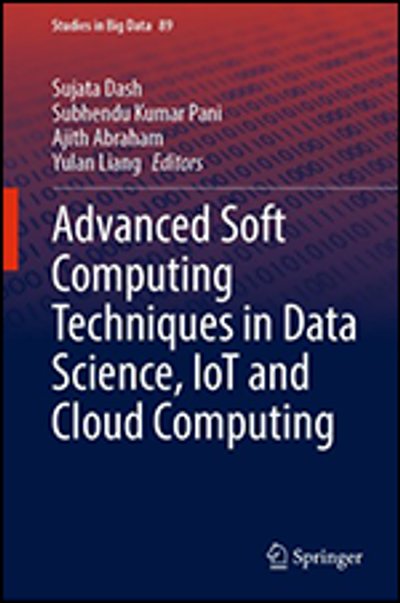Advanced Soft Computing Techniques in Data Science, IoT and Cloud Computing
- 7h 10m
- PaniAjith Abraham, Subhendu Kumar, Sujata Dash, Yulan Liang
- Springer
- 2021
This book plays a significant role in improvising human life to a great extent. The new applications of soft computing can be regarded as an emerging field in computer science, automatic control engineering, medicine, biology application, natural environmental engineering, and pattern recognition. Now, the exemplar model for soft computing is human brain. The use of various techniques of soft computing is nowadays successfully implemented in many domestic, commercial, and industrial applications due to the low-cost and very high-performance digital processors and also the decline price of the memory chips. This is the main reason behind the wider expansion of soft computing techniques and its application areas. These computing methods also play a significant role in the design and optimization in diverse engineering disciplines. With the influence and the development of the Internet of things (IoT) concept, the need for using soft computing techniques has become more significant than ever. In general, soft computing methods are closely similar to biological processes than traditional techniques, which are mostly based on formal logical systems, such as sentential logic and predicate logic, or rely heavily on computer-aided numerical analysis. Soft computing techniques are anticipated to complement each other. The aim of these techniques is to accept imprecision, uncertainties, and approximations to get a rapid solution.
About the Author
Sujata Dash, Department of Computer Science and Application, North Orissa University, Bhubaneswar, India.
Subhendu Kumar Pani, School of Computer Science and Engineering, Orissa Engineering College, Bhubaneswar, India.
Ajith Abraham, Faculty of Electrical Engineering and Computer science, Machine Intelligence Research Labs (MIR Labs), Auburn, USA.
Yulan Liang, Department of Family and Community Health, University of Maryland, Baltimore, USA.
In this Book
-
Abbreviations
-
A Wearable Assistive Device for Safe Travel Using Transfer Learning and IoT for Visually Impaired People
-
Soft Computing Techniques for Physical Layer Security of IoT Devices
-
Linear Congruence Generator and Chaos Based Encryption Key Generation for Medical Data Security in IoT Based Health Care System
-
Content Based Video Retrieval—Methods, Techniques and Applications
-
Building the World of Internet of Things
-
Applicability of Machine Learning Algorithms for Intelligent Farming
-
Hybrid Cloud Data Protection Using Machine Learning Approach
-
Analysis of Long Short Term Memory (LSTM) Networks in the Stateful and Stateless Mode for COVID-19 Impact Prediction
-
Soft Computing Techniques for Energy Consumption and Resource Aware Allocation on Cloud—A Progress and Systematic Review
-
Automatic Segmentation and Classification of Brain Tumor from MR Images Using DWT-RBFNN
-
Automatic Localization of Optic Disc in Retinal Fundus Image Based on Unsupervised Learning
-
Performance Evaluation of Hybrid Machine Learning Algorithms for Medical Image Classification
-
Computing Truth Values of Modus Ponens and Modus Tollens Rule for Linguistic Truth-Valued Propositions and Its Application in Taking Decisions in Health Care
-
Analysis of Customers’ Reviews Using Soft Computing Classification Algorithms—A Case Study of Amazon
-
Pattern Mining—FTISPAM Using Hybrid Genetic Algorithm
-
Soft Computing Techniques for Medical Diagnosis, Prognosis and Treatment
-
Role of Artificial Intelligence in COVID-19 Pandemic
-
Prediction of Transmittable Diseases Rate in a Location Using ARIMA



